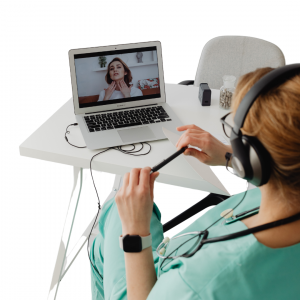Endometriosis is a painful condition that occurs when tissue similar to the uterus lining (womb) grows outside of the uterus. This condition involves the ovaries, fallopian tubes, and the tissue lining the pelvis and severely impacts women’s quality of life.
Understanding endometriosis
Dr Antonio Rodrigues gives insight on endometriosis, its symptoms, how it impacts our daily lives, and the treatment options available.
Are there different types of endometrioses?
There are four types of endometrioses, grouped by what area of the pelvis or abdomen is affected:
Superficial peritoneal endometriosis
It is the least severe form of endometriosis. In this type, the endometrial tissue attaches to the peritoneum- a thin membrane that lines your abdomen and pelvis. It also covers most of the organs in these cavities.
Endometriomas
These are dark, fluid-filled cysts, also called chocolate cysts. They vary in size and can appear in different parts of your pelvis or abdomen, but they’re most common in the ovaries.
Deeply infiltrating endometriosis (DIE)
This condition is also called the frozen pelvis. The endometrial tissue has invaded the organs either within or outside the pelvic cavity in this type. It can include the ovaries, rectum, bladder, and bowels. It’s rare, but sometimes scar tissue can bond organs, so they become stuck in place; however, this only happens to 1%-5% of people with endometriosis.
Abdominal wall endometriosis
In some cases, endometrial tissue can grow on the abdominal wall. The cells may attach to a surgical incision, like one from a C-section.
Endometriosis symptoms
Common signs and symptoms of endometriosis may include:
- Painful periods (dysmenorrhea) and cramping before and during your menstrual period.
- Pain during intercourse.
- Pain with bowel movements or urination during your menstrual period.
- Heavy bleeding during your menstrual period or bleeding between periods.
- Infertility – endometriosis is often first diagnosed in those seeking infertility treatment.
- Other signs and symptoms may include fatigue, diarrhoea, constipation, bloating, or nausea, especially during menstrual periods.
How to prepare for a doctor’s appointment
Endometriosis symptoms are manageable. Talk to your doctor if you’re experiencing severe or persistent pain. If you think you might have endometriosis, speak to a doctor before trying to manage the symptoms alone.
Intercare healthcare professionals can help with early diagnosis and treatment. Our doctors can also refer to a network of mental, medical, or fertility specialists.
Visit our website for more information or to book an appointment at a facility near you.
Sources
- Agarwal, S.K., Chapron, C., Giudice, L.C., Laufer, M.R., Leyland, N., Missmer, S.A., Singh, S.S. and Taylor, H.S. 2019. Clinical diagnosis of endometriosis: a call to action. American journal of obstetrics and gynecology.
- Ferrero, S., Evangelisti, G. and Barra, F. 2018. Current and emerging treatment options for endometriosis. Expert opinion on pharmacotherapy.
- https://www.mayoclinic.org/diseases-conditions/endometriosis/symptoms-causes/syc-20354656
- https://www.healthline.com/health/womens-health/is-endometriosis-an-autoimmune-disease
- https://www.womenshealth.gov/a-z-topics/endometriosis
- https://www.webmd.com/women/endometriosis/endometriosis-types-stages
- https://pubmed.ncbi.nlm.nih.gov/












